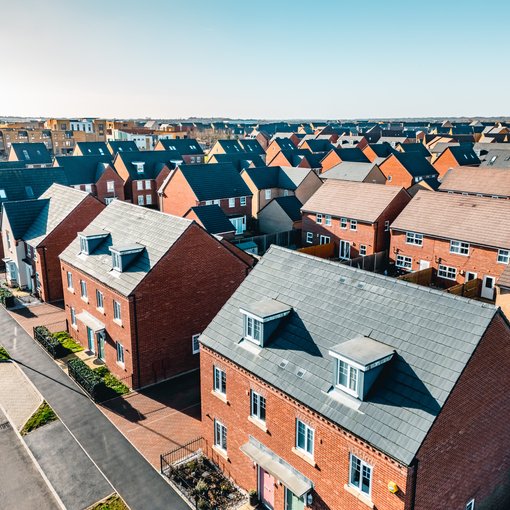
On a grey January afternoon, I travelled from Cardiff to the Rose Hill community in Oxford, where I attended the celebration of the first stage of Clean Heat Streets alongside local residents, researchers, council employees and civil servants.
As part of the project, households replaced their existing heating systems with air source heat pumps. They received offers tailored to their homes, complete with a time-of-use tariff.
Drawing on partnerships with industry, research, and local community groups, Oxford City Council devised a scheme which eased the process of switching to clean heat for households. The team at the council also designed a personalised service, complete with a discounted energy rate secured for the area.
At Nesta, we think this is exactly the sort of approach that could accelerate the transition to low-carbon heating while simplifying the process for many households in parallel.
While Clean Heat Streets revolved around a group purchase of heat pumps for a community, we imagine this approach could also include other technologies, such as individual air-source heat pumps, shared ground loops, or even heat networks. Technological solutions would be shaped by local needs and knowledge, and help move us closer to our decarbonisation targets, while giving households access to a cleaner and more efficient technology through an easier route.
Schemes like Clean Heat Streets and Switch Together demonstrate the central role of local authorities in the switch to clean heat. So, what can we learn from their experiences?
Local authorities will need more resources and capabilities to drive the clean heat transition. So far, much of local authorities’ decarbonisation efforts have been directed at social housing and households in fuel poverty, and with good reason.
Most local authorities face severe funding constraints. Central government will need to support local authorities to help drive the decarbonisation of housing beyond these initial cohorts.
To do this, we think that the UK Government should fund pilots across the UK, but also give local authorities revenue funding to drive this process, with Barnett consequentials for Wales and Scotland as a minimum baseline. This is the sort of approach needed to reach the ‘squeezed middle’ - households who don’t qualify for fuel poverty support but may not currently have the funds or borrowing abilities to take advantage of the Boiler Upgrade Scheme (BUS).
Local authorities are well placed to build trust in the clean heat transition and engage residents around plans for decarbonising homes in their area. They hold deep knowledge about their area and its needs, essential to roll out a local scheme.
Our early findings on how to communicate a local clean heat scheme with households showed the importance of designing localised, tailored communication. Residents expect reassurance and information around practical points such as road closures. We also know that there is a risk of residents underestimating uptake of clean heat neighbourhood schemes among their neighbours, and we believe this may affect uptake. A well-organised campaign showing the positive impact of a scheme in a neighbouring street or community could make a real difference.
We think granular planning at a local level could support the transition by helping set roadmaps and priorities, but also by acting as a signal to engage and build a skills pipeline. Local planning must underpin the transition, building on data and scenarios such as Local Area Energy Plans to understand the needs of an area.
Planning could also help drive engagement with local educational institutions such as colleges, helping to guide and make the case for appropriate training provision by sending strong signals about skills requirements in an area.
In more rural areas, we heard that a lack of skilled workers could hold back the shift to clean heat. This can lead to hiring companies from outside the area. Giving colleges a strong signal early on could help create a stable skills pipeline to install and maintain infrastructure. This, in turn, would help young people remain in their communities and find high-quality local work opportunities.
Beyond the planning stage, households will need certainty about the technology installed in their homes and confidence in the proposed suppliers. So, how could local authorities play an enabling role and what support might they need to engage with the private sector?
Communal infrastructure projects may go through a procurement route, but they will not be suitable for all areas. For individual heating technologies such as air source heat pumps, which we expect will form the majority of clean heat neighbourhoods schemes, a local authority could drive the process by providing a list of accredited or preferred suppliers, or a reverse auction process whereby a council or local authority would bundle up properties for a supplier to retrofit.
The best solution may depend on a local authority’s needs and local preferences, but local authorities we engaged with were unanimous in their agreement that this would require solid consumer protections and clear guidance, as well as a guarantee period for maintenance and aftercare post-installation.
Examples of innovative practice in this area are out there already: Plymouth’s Climate Connections Heat Pumps in Practice events facilitated opportunities for consumers to meet heat pump installers. One avenue to explore may be the kind of quality frameworks required to best support local authorities interested in engaging in an area-based decarbonisation scheme, but also defining guarantee routes if things go wrong.
Colleagues working in and with local government have helped shape our vision for clean heat neighbourhoods, but the clean heat transition will be new territory for many local authorities. They will need additional resources and support from central government.
Building on local knowledge and insights to tailor clean heat neighbourhood schemes will help guarantee their success and get residents on board with the clean heat transition. As we look to derisk and scale up clean heat neighbourhoods, local authorities will be essential partners.